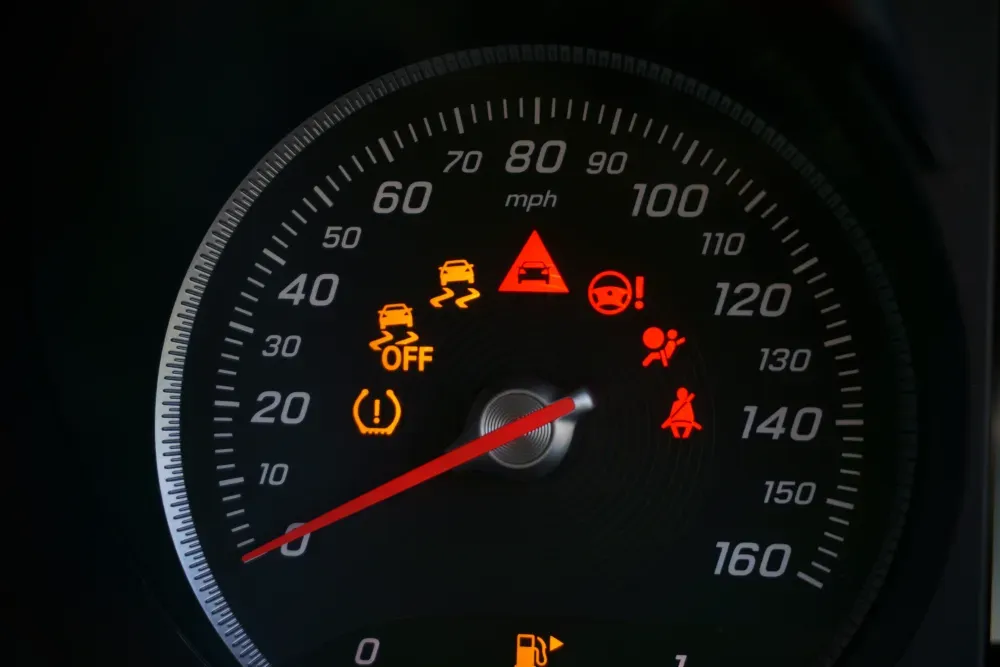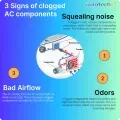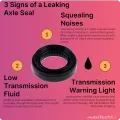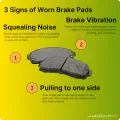
Seeing a warning light on your vehicle's dashboard can trigger some unease. You'll start wondering what the light means and what issue it indicates. Plus, these warnings come without any detectable noise, smell, or noticeable change in the car’s performance. So, should one act after seeing the dashboard light or wait for an actual sign of trouble?
This article will discuss the risks associated with neglecting the dashboard warnings.
Should You Try to Clear the Warning Light Yourself?
It's not ideal to deal with the car's system issues without a professional review. For instance, look at the detailed list below to grasp the range of possible problems you might find:
Most warning lights require specialized diagnostic tools to detect the underlying cause. These complex tools are used by experienced auto repair shops that can evaluate your vehicle's health through safe processes.
You'll find a list of these specialized shops at AutoTechIQ.com by using the shop selector tool.
Moreover, AutoTechIQ.com focuses on user-friendly content, circulating the meaning of dashboard warning lights in a comprehensible, jargon-free presentation.
Understanding Common Dashboard Warning Lights
We'll list the most recurring warning lights below. If you have any of these lights on your dashboard, consider reading the specific article about it on AutoTechIQ.com. There, you'll see an in-depth explanation of the specific warning, listing possible culprits and silent symptoms. Also, sharing the article with the shop's technicians can speed up the diagnosis process:
-
Engine Warning Light: Indicates possible engine malfunctions.
-
Brake Warning Light: Suggests potential issues with your braking system.
-
Tire Pressure Warning Light: Alarms you of inconsistent tire pressure.
-
Oil Pressure Warning Light: Points to potential oil pressure irregularities.
-
Power Steering Warning Light: Signifies potential steering system issues.
What Additional Signs Should You Keep an Eye On?
Your vehicle may manifest some side symptoms. These might range from unusual humming/buzzing sounds, one-sided steering, fuel efficiency loss, or squealing noises, especially when using brakes.
If any of these symptoms keep recurring, consider immediate action. Plus, provide context-detailed descriptions for a mechanic; every detail is crucial. A detailed narrative helps pinpoint the issue, potentially eliminating most suspected causes. This accelerates the repair process and can save you from additional diagnostic costs.
What Can Additional Symptoms Mean for Your Vehicle
Besides the obvious warning light, other symptoms might hint at complex issues in your vehicle. For example, more serious symptoms can be engine misfires, which means there's something wrong with the combustion process. Consequently, this might involve expensive parts of the car that might progressively damage quickly.
A different "silent" symptom to keep an eye on concerns the ABS and TCS. The ABS (Anti-lock Brake System) won't be noticeable until you floor the brakes to make an urgent stop. Then, the TCS (Traction Control System) might cause the vehicle to lag in turns and rough terrain.
Budgeting for Your Vehicle's Maintenance
Many vehicle owners follow service intervals suggested by their auto repair professionals. Still, a huge percentage only visit when a debilitating issue appears. Often, the latter approach results in heftier expenses since each unplanned visit requires more diagnostic time to compensate for a lack of maintenance.
So, developing a healthy inspection schedule with your trusted auto shop is more strategic. Consider the Digital Vehicle Health Inspection or Digital Auto Checkup as a semi-annual "physical" for your vehicle. This regular review provides an overview of your car's health; its format shows results from past inspections in comparison to the most recent to track wear and tear trends. Then, your mechanic uses this information to suggest the optimal maintenance routine.
What is a Digital Auto Checkup?
A Digital Auto Checkup is similar to a health checkup. For instance, after taking your vehicle for a complete inspection, the auto shop stores all the findings in its system. Then, you can use your vehicle's "medical records" to clarify its condition in any future visit. Therefore, the Digital Auto Checkup offers a foundational vehicle health assessment.
The AutoTechIQ Advantage for Car Owners
A visit to an auto repair shop can often put you in a defensive stance. AutoTechIQ aims to change this narrative. Shops within the AutoTechIQ network prioritize educating customers and delivering comfortable service. Therefore, these shops meet specific criteria, ensuring quality.
Google Reviews: They have a minimum of 100 Google reviews, and their average rating must exceed 4.5 out of 5.
All-around Inspection: They routinely employ a Digital Vehicle Health Inspection, covering at least 35 critical vehicle aspects.
Guided Images and Videos: Their inspection result sheet shows images and videos with clear texts and indicators (red arrows, pointers) explaining their relevant elements.
Other news
-
Car is Squealing When Driving

-
What is Preventative Maintenance and What Are The Benefits of it?

-
JobViewIQ - DVI Process Training - Part of the Auto Care Alliance Benefits

-
7 Signs of Clogged AC Components

-
How Much Does a Transmission Fluid Change Cost?

-
7 Signs of a Leaking Axle Seal

-
8 Signs of a Bad Brake Pad
